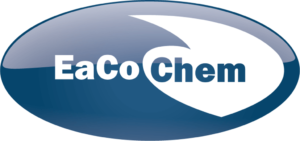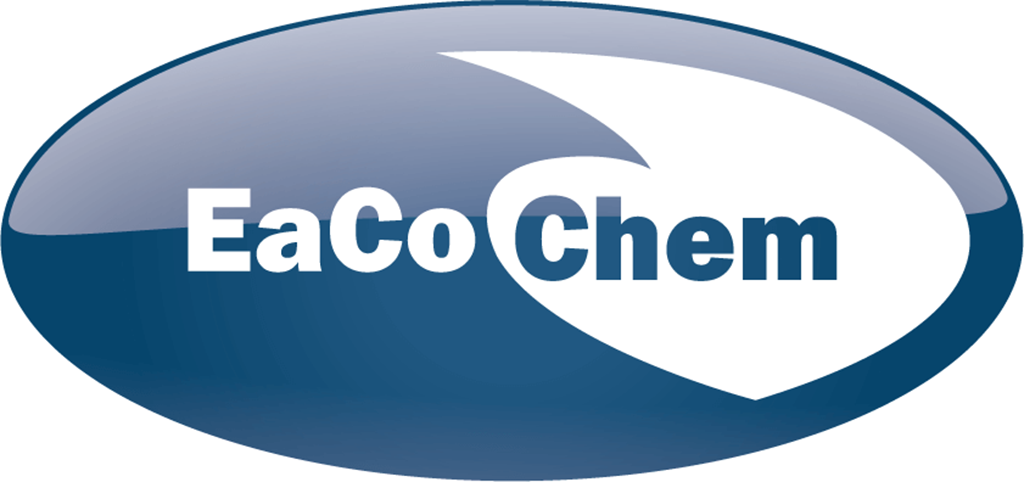
EaCo Chem FAQs
You can learn more from our Frequently Asked Questions
“I don’t know what it is.” “Why should I test?” “Just tell me what to use?”
Pros know that all projects are not the same. The purpose of testing is to find the solution first when removing the various stains and deposits.
There are factors to consider:
- Is the product used straight (undiluted) or diluted at what ratio?
- How is it being applied?
- How fast or slow is the applicator person moving when applying the product?
- How many applications?
To start, you need:
- Tape measure
- Graduated spray bottle
- Calculator
Knowing how much product you need can also give you the square foot coverage.
Identifying those types of deposits can be tricky.
Examples:
Calcite (calcium carbonate) will appear as a thick whitish deposit that usually forms over time.
Lime Run (calcium hydroxide) occurs as a steady release of calcium soaked water that creates a streak.
Admixtures in mortar can bleed out leaving a white stain that can appear above and below the mortar joints. It looks similar to calcite and lime run.
For more information, check out White Deposit Issues.
Dilutions will vary, depending on the surface porosity, texture and severity of staining. Dilution ranges are listed within the product data / specification.
Always test dilutions in an inconspicuous area prior to beginning full-scale cleaning operations.
For more information, check out Benefits of Testing.
There are many types of black stain. If you know the type of stain & the type of substrate / surface, take a look at the “Encyclopedia of Clean”.
If you don’t know, email photos to info@eacochem.com or call for assistance at (724) 656-1055.
Efflorescence is often described as a white or ivory chalk-like deposit. There might be a reason why the products used for efflorescence removal are not working, including the possibility that it is not even efflorescence.
For more information, check out White Deposit Issues.
Avoid direct contact with foliage.
Cover landscaping using plastic or wet the foliage with water before, during and after the cleaning process.
Discharging detergents or chemicals into storm drains that lead to your creeks, streams, rivers and lakes is not permissible, as stated declared in the Clean Water Act of 1972.
For more information, check out Environmental Statement.
Now more than ever, environmental awareness is a major concern.
It depends on the type of work that is being done. When required, disposing of rinse waters after using chemical cleaners must be done properly to avoid costly fines.
For more information, check out Collecting Rinse Water.
Not knowing the type of paint, makes it difficult to know which type of paint stripper will work.
Since there are a variety of paints, a Paint Test Kit is useful to find the correct product prior to the project.
The kit has 5 products for removing water base and solvent base, single layers and multiple layers.
For more information, check out Paint & Coating Stripping Manual.
Cleansol BC for brushless cleaning sun bleached vinyl siding, oxidized paint from metal siding and EIFS.
Cleansol BC works well in tandem with HD Britenol. HD Britenol removes stains that can occur under the eaves on siding.
It depends on the severity of the stain which product would be used. Heritage Restorer, OneRestore, Stripper Cream.
For more information, check out Learning Center – Limestone Restoration.
If the adjacent substrate is not listed on the product data sheet, test the product.
Testing first can determine any potential or adverse reactions with adjacent materials.
OneRestore® has been proven time and again to be safe for glass and anodized aluminum frames.
For more information, check out OneRestore – Glass & Anodized Aluminum.
When removing aged mortar smears. two to three applications of NMD 80 or SOS50 is needed.
Do not rinse between applications to extended the dwell time.
For more information, check out New Construction Cleaning Process.
There is more than one type of white deposit:
- Efflorescence
- Scuff Marks
- Secondary Hydration or “Halos”
- Hard Water Stains
For more information, check out Hardscape Cleaning Process.
Concrete flatwork:
- HD Britenol for smooth trowel finish concrete
- GS Restoration for broom finish concrete
- Heritage Restorer for white concrete with white sand.
Vertical applications:
OneRestore® and Heritage Restorer except for polished stone.
Dinginess from air pollution, foot traffic, general maintenance: Cleansol BC.
For new construction cleaning: SOS50.
OneRestore removes cleans and de-blushes many sealer.
Silicate Blush Remover over applied silicate.
AcrylicStrip for solvent base sealer.
LCS for water-based sealer remover.
Professionals always test product(s) in a small inconspicuous area prior to beginning full-scale cleaning operations.
Depends on the substrate:
Asphalt shingles, slate, cedar shingles – HD Britenol.
Painted metal roofing – CP&B, Cleansol BC.
Concrete roofing tile – NMD 80.
Flexible rubber membrane EPDM – HD Britenol, Cleansol BC.
Terra cotta – OneRestore.
For more information, check out All Products.
For masonry, glass, stucco: OneRestore.
For masonry, synthetic stucco, arid regions: HD Britenol.
For more information, check out White Deposit Issues.
Cleansol BC (blenders concentrate) is diluted at 4:1 (water to product) when applied to gutters and down spouts only.
Craftsmanship determines the appropriate pressures for rinsing. Pressures that mark or damage the surface should be avoided.
A 40-degree tip is recommended especially for sand faced or other special brick surfaces to reduce the potential for surface damage.
Use lower rinse pressures (no more than 1000 p.s.i.) when cleaning sensitive substrates.
Examples: Sand faced brick, concrete brick, synthetic masonry and surface dyed substrates including limestone, and sandstone need to be rinsed at lower pressures.
Click on our “Distributor Locator” tab located on the EaCo Chem home page. Type in the name of the city & state or the zip code. The radius of miles to find the closest distributor can be entered.
It is best to call a sales person first to check their inventory for availability.
If you are having difficulties getting what you want, email us at info@eacochem.com or call 724-656-1055.
We are available Monday through Friday from 8 am until 5 pm Eastern.
